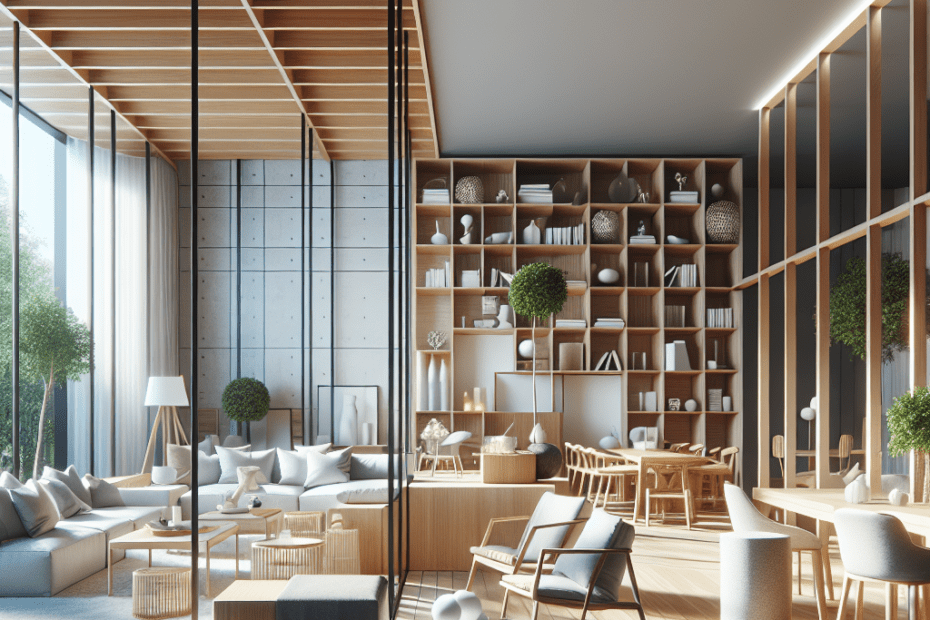“`html
How to Arrange Furniture for an Indoor-Outdoor Living Space
Designing an indoor-outdoor living space can improve any home. People enjoy the seamless fusion of indoor comfort and outdoor beauty, blending the two spaces to make one welcoming, multifunctional area. With the right indoor-outdoor furniture, they can create a versatile environment that fits any occasion, from family time to entertaining guests.
Understanding Indoor-Outdoor Living Spaces
Indoor-outdoor living spaces have gained popularity due to their ability to enhance the living experience by bringing nature closer to home. According to Houzz’s 2020 State of the Industry Report, 70% of homeowners focused on outdoor living spaces indicated it was because they wanted better utilization of outdoor areas. These spaces often combine elements of both interior design and landscape architecture, creating a harmonious flow that challenges traditional use of space.
Key Principles in Arranging Indoor-Outdoor Furniture
To maximize the potential of an indoor-outdoor living space, several key principles should be followed:
- Harmony: Choose furniture pieces that match or complement both your interior and exterior aesthetics.
- Durability: Select weather-resistant materials for furniture that will stay outside.
- Flexibility: Arrange furniture to allow for easy rearrangement, accommodating different activities and gatherings.
- Comfort: Consider comfort in choosing materials like cushions and upholstery suitable for both settings.
- Accessibility: Ensure pathways are clear for movement between indoor and outdoor spaces.
Furniture Choices for Indoor-Outdoor Spaces
They need to choose the right indoor-outdoor furniture to create a fluid connection between spaces. Here’s a comparison of common materials used for indoor-outdoor furniture:
| Material | Advantages | Considerations |
|---|---|---|
| Wicker | Lightweight, stylish, weather-resistant | May require cushions for comfort |
| Teak | Durable, weathers beautifully, low maintenance | Heavier, higher cost |
| Metal | Strong, versatile designs, sleek finish | Can heat up in direct sunlight |
| Plastic | Affordable, lightweight, variety of colors | May lack in elegance compared to natural materials |
| Composite | Mimics natural materials, eco-friendly options | Varies greatly in quality and durability |
Creating a Multi-Zone Space
They should consider creating multiple zones within their indoor-outdoor living space to enhance its usability. These can include dining, lounging, and entertainment zones, each serving a different purpose:
- Dining Zone: Place a sturdy table that can withstand the elements outside, with chairs that are comfortable enough for indoor use.
- Lounging Zone: Use sectionals or daybeds for a cozy setup that encourages relaxation.
- Entertainment Zone: Set up a space with moveable seating, such as poufs or benches, allowing easy transformation for parties or gatherings.
Incorporating Natural Elements
Natural elements also enhance the transition between indoor and outdoor areas. They may integrate potted plants, whether indoors or on patios, to tie spaces together naturally. Adding water features or a fire pit can serve as focal points within the layout, providing ambiance and structural interest.
Key Takeaways
- Indoor-outdoor living spaces blend indoor comfort with outdoor aesthetics, fostering interaction with nature.
- Choosing weather-resistant, flexible indoor-outdoor furniture is crucial for versatility and durability.
- Creating distinct zones (dining, lounging, entertainment) within the space enhances functionality.
- Natural elements tie indoor and outdoor areas together, offering a seamless blend of the two environments.
FAQs
- Why is indoor-outdoor furniture important?
Indoor-outdoor furniture is important because it allows for a seamless transition between spaces, providing versatility and durability suitable for both environments. - What materials are best for indoor-outdoor furniture?
Materials like wicker, teak, metal, and composites are ideal for indoor-outdoor furniture due to their durability and aesthetic appeal. - How can I create distinct zones in an indoor-outdoor space?
Use furniture arrangements, rugs, or built structures such as pergolas to visually define areas for dining, lounging, and entertainment. - Can I use indoor furniture outside?
While indoor furniture can be used outside temporarily, long-term use requires weather-resistant materials specifically designed for outdoor exposure. - What are some popular design trends for indoor-outdoor spaces?
Popular trends include mixing natural materials, incorporating biophilic design with plants, and using multifunctional furniture pieces.
Arranging furniture for an indoor-outdoor living space requires thoughtful planning to ensure functionality and style. By selecting the right indoor-outdoor furniture and creating harmonious, multi-use areas, they can craft a space that offers the best of both worlds, seamlessly connecting the comfort of home with the beauty of nature.
“`
